METABOLIC SCORES
Overview
This passage gives you detailed information about the inference of metabolic Score in pets and how it is calculated.
What is a Metabolic Score?
Metabolic Score is a live novel insulin-based marker to analyse the risk of insulin resistance in pets and helps in following better daily pet lifestyle.
Interpretation Of Metabolic Score
Metabolic Score is depicted as an aggregate percentage out of 100. Usually, the more the metabolic Score, the better it is. However, the average FirmPet enrolled pet scores between 60% to 80% regularly. Yet some highly affluent pets may even achieve a Metabolic score of more than 85% as well.
How Is The Metabolic Score Calculated?
Mainly three parameters make up the Metabolic Score: Average Glucose, Variability and Time-In-Target Glucose Range. These parameters tally with good metabolic health and composite them into an exclusive percentage of 100. Hence, pet owners can comprehend the effects of daily lifestyle on a pet’s glucose level.
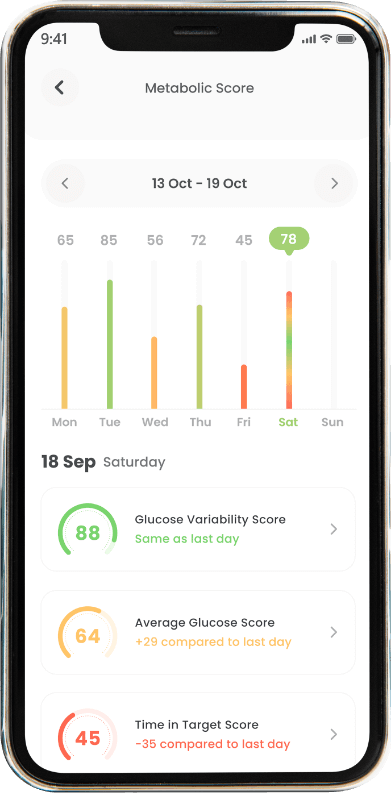
Average Glucose:
Baseline glucose or Pet’s resting primarily impacts the Pet’s average glucose level. For Pet to stay healthy, its body maintains the gross glucose levels as limited as possible. The baseline glucose acts as a ground to rigid scale.
Variability:
The ‘highs’ and ‘lows’ Pet comes across with their glycemic level variability. If the graph shows high glucose variability (a rocky glucose graph with frequent ‘ups’ and ‘downs’), it may have a low metabolic score. On the other hand, Lower glucose variability (a steady graph with negligible ‘ups’ and ‘downs’ in glucose levels) symbolises better metabolic health and a high Metabolic score.
Time-In-Target Glucose Range:
The Time in Target score is a metric that measures the percentage of time a pet’s blood glucose levels remain within a specified target range. It is an essential measure for maximising the pet’s metabolic score and ensuring good metabolic health. Consistently maintaining the pet’s blood glucose levels within the target range throughout the day is crucial for achieving optimal metabolic health and a higher percentage indicates better metabolic health for the pet.
Best practice to improve pet’s metabolic health
After enrolling your pet into the FirmPet Program, the pet may have gone through higher glucose variability due to the sudden lifestyle and dietary reforms. Eventually, as the program progress, the pet owners get enlightened about metabolic health and execute the practices they learn through an app. Hence, glucose variability becomes more stabilised later on.
- >> If pet is obese add probiotics, fish oil, coconut oil and coconut fibre to the pet’s diet. It will help them to lose excess weight and improve metabolism.
- >> Before starting with the pet’s exercise, conduct a warm-up session for them to prevent fatigue. Warm-up raises the oxygen intake level, improves muscles temperature and decreases lactate accumulation.
- >> Pets should be adequately hydrated before any event and given chances to rehydrate themselves during rest time. Plain fluids and electrolytes can solve the purpose of rehydration.
- >> Poor sleep, inadequate diet, skipping meals, stress levels etc., can result in a low metabolic score.
Various factors affect the metabolic score of a pet. Following the above tips will help you stabilise and improve pet’s live metabolic score. With the FirmPet app, optimise your pet’s lifestyle and visit the blogs on our website for the latest updates.
MEAL SCORE
Overview
This passage gives you detailed information about the FirmPet Meal Score System in pets and the process to calculate it.
What is a Meal Score?
Meal Score is a survey of all the entered physical activities, daily feed and pet notes that happen within a regular day. It is ascertained on a scale of 0-10, highlighting the gross impact of such choices on the pet.
It is essential to account that a pet’s behavioral choices never occur in a void; that is, a nap, warm-up activities and a snack impact metabolism. However, such decisions occur in proximity which ultimately has an inter-dependent effect on each other. FirmPet app records such Meal Scores and guides the pet owners about the various influences that stimulate the pet’s response to the meal. After examining all the recorded activities that occur close to each other, Meal Score depicts a grade, representing the gross effects of the choices.
Deciphering the Meal Score
The Meal Score scales from 1-10 where 10 is the lowest (optimal) response is detected and ‘1’ is the highest (poor) score. Generally, it is preferred to have controlled and minimum glucose response among pets.
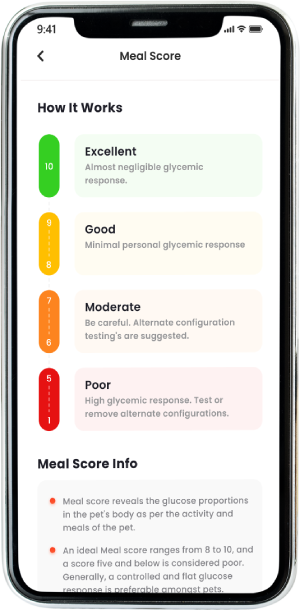
- >> Excellent: Negligible Increase In Glucose Response.
- >> Good: Minimum Glucose Response In Pets.
- >> Average: Be Careful. Examining Alternative Configurations Is Preferable.
- >> Poor: High Glucose Response. Test, Reduce Or Lower Alternate Formats.
How to calculate Meal Score?
Meal Score is an amalgamation of the height of the glucose peak, glucose rise from baseline and recovery time back to baseline, everything related to the pet’s metabolic health.
- >> Glucose rise from baseline: Anticipated based on average 30 minutes before the pet’s registration (the baseline) to the apex glucose range within two hours after the registration.
- >> Glucose peak: The maximum frequency of glucose levels attained in this zone.
Best practices to boost Meal Score
One can experiment with the diverse variables of Meal Score, either by adding or eliminating some. It helps to learn the effects of the entire pet’s Meal Score and metabolic response. To illustrate, eating one bowl of pedigree is likely to raise the Meal Score in pets while feeding the pet back to back with one bowl of chappie, three pickles and three chicken bacon biscuits within an hour may decrease the Meal score.
Hence, it helps you understand which favourable and non-favourable factors maintain a constant glucose level. Further, if you wish to isolate a specific pet food to comprehend its particular metabolic effect, you can isolate that entry in a two-hour window on either side.
How to log a Meal, Exercise or Insulin
Overview
This passage provides a step-by-step guide on how to add a log entry for food, exercise or Insulin.
FirmPet uses logged data to provide regular detailed feedback about the pet’s body reaction in response to their activities. Log all the pet’s activities – exercising, insulin, meals – in the FirmPet app, often to get accurate metabolic health feedback.
How to Log a Meal, Activity or Insulin
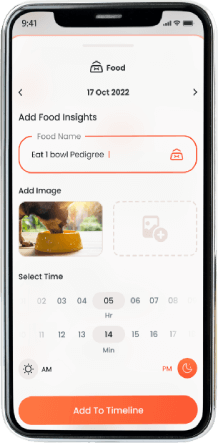
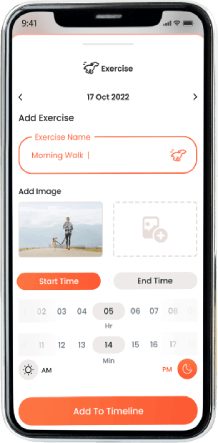
1. In the FirmPet App, click on a ‘+’ button on the top right corner of the screen. Select food, insulin or exercise to add to your activity insights.
2. Select the date and add the food/Insulin/exercise name in the box.
- >> While adding insulin insight, add dosage units as well.
3. Import an image of your activity, from your phone’s gallery, by clicking on the ‘Add image’ icon. Adding an image is optional, so if you want to opt for no image, go ahead with the next option. It will not affect your scoring.
- >> Click on the ‘photo’ option at the bottom of the screen if you want to capture the image.
4. Add the Start Time
- >> For Exercise logs, you can enter the end time too.
5. Click on ‘Add to timeline’.
- >> You can view your logs on the metabolic screen of your pet’s profile under the head ‘Timeline’.
- >> FirmPet uses the food entry logs to provide the Meal Score of your pet.
How to Edit/ Delete the log
You can make changes or delete the existing log:
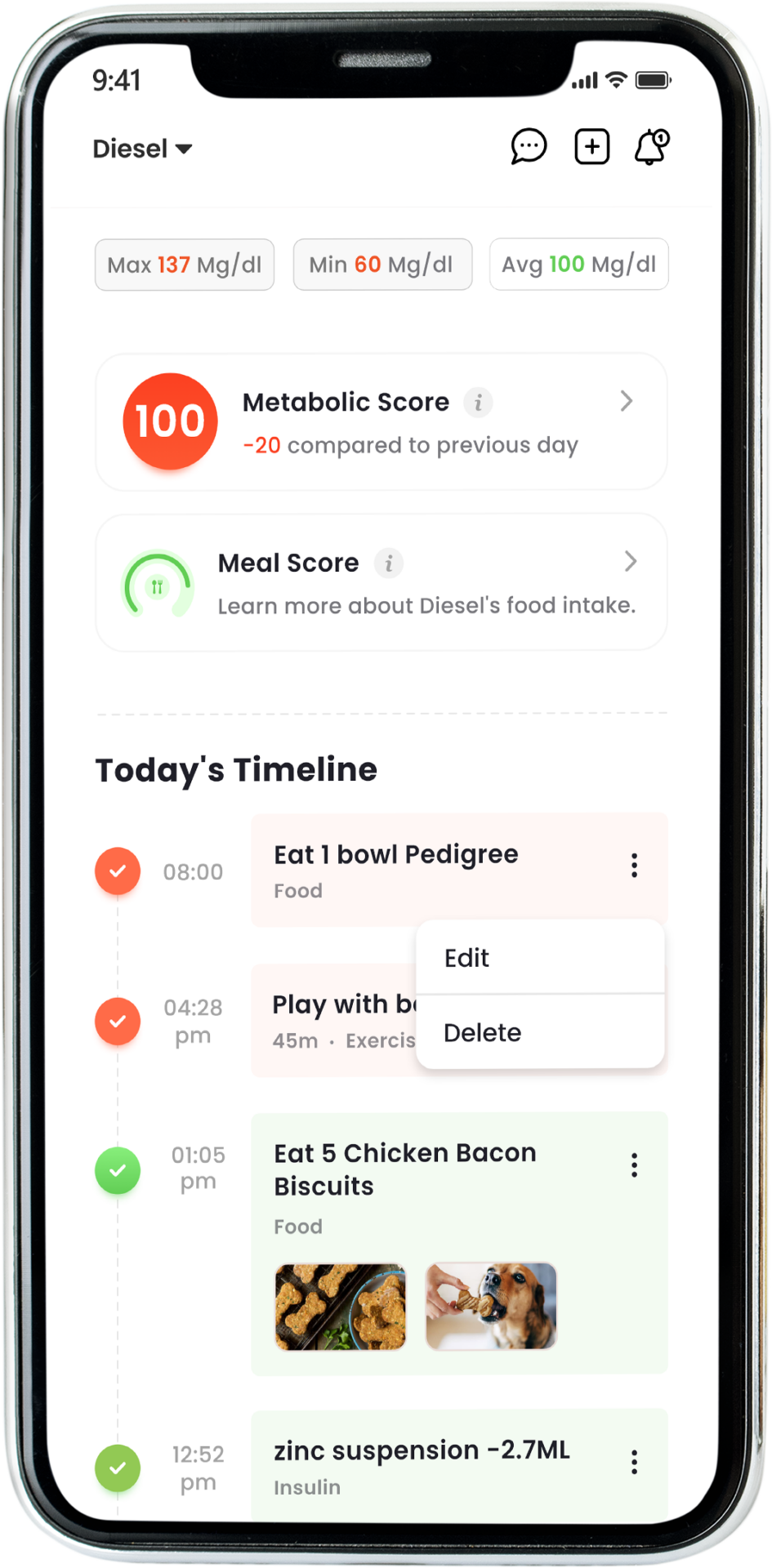
- 1. Go to the ‘metabolic screen’ of your pet’s profile.
- 2. Under the ‘Timeline’ head, find all the logs you created.
- 3. Long press the log you want to edit or delete.
- >> If you want to change the photo, simply tap the image to edit
- >> Press the ‘delete icon’ on the top right corner of the image to delete it.
- 4. Click on ‘Update to timeline’.
